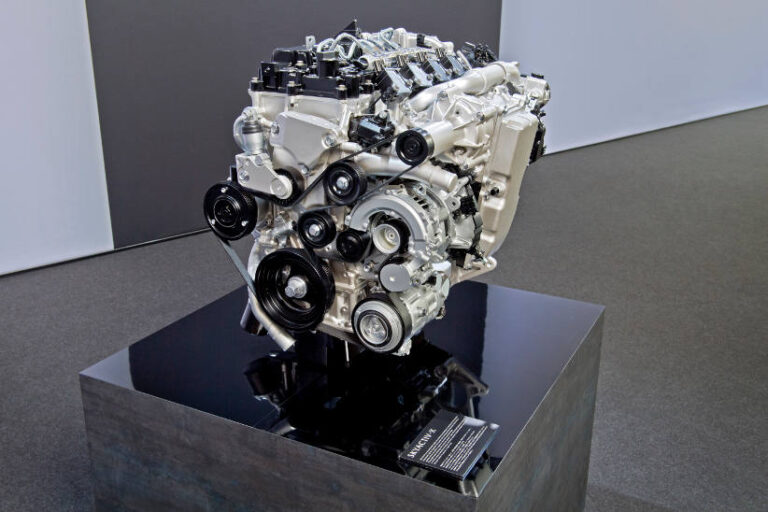This article was originally published by Fleet News.
Mazda claims its Skyactiv-X petrol engine has the potential to reduce emissions from an internal combustion engine to below that of an electric vehicle when measured well-to-wheel.
The manufacturer says that until the quantity of electricity generated from renewable sources such as wind and solar replaces the dirtiest forms of electricity generation such as brown coal, electric powertrains do not currently satisfy society’s wish for a drastic reduction in CO2.
Instead, Mazda says it is focused on bettering the real-world emissions of EVs by maximising the efficiency of the internal combustion engine.
A spokesman said: “With two thirds of global electricity production currently relying on the use of fossil fuels, Mazda believes regulations placing the absolute emissions of an EV at zero to be disingenuous.
“In order to more correctly measure CO2 emissions over the lifecycle of a vehicle, Mazda is moving beyond current ‘tank-to-theel’ evaluations (which consider only emissions whilst driving), to a well-to-wheel method, which also considers fuel extraction, manufacturing and shipping.
“The use of ‘well-to-Wheel’ emissions evaluation will allow Mazda to make a more accurate assessment of the appropriate powertrain development paths to pursue in the immediate future. In this context, the company has reconsidered the ecological merits of EV vehicles which consume power generated by using fossil fuels.”
Mazda said a mid-sized electric car consumes around 20 kilowatt-hours of electricity per 100km.
Production of this power with coal translates into CO2 emissions of 200g/km; with petrol, 156g/km; and with LNG (liquefied petroleum gas) 100g/km.
When converted to a well-to-wheel figure, then, the average CO2 emissions of an EV are 128g/km, depending on the power generation source, while that of a Skyactiv-G petrol engine of comparable power is 142g/km.
Mazda said this means that with as little as a 10% improvement in efficiency, the CO2 emissions produced by a Skyactiv-G engine will be on a par with those of EVs.
It added a Skyactiv-G engine produces less CO2 well-to-wheel, than EVs whose electricity is generated by coal or petroleum.
While EVs using LNG-produced electricity have 30% lower emissions, Mazda believes it can improve the internal combustion engine sufficiently to match that level.
However, as part of its commitment to reducing its corporate average well-to-wheel CO2 emissions to 50% of 2010 levels by 2030, and to 90% by 2050, the company will introduce an EV and mild hybrid technology -or microhybridisation- in 2019, models with built-in batteries in 2020, and the brand’s first plug-in hybrid in 2025.






